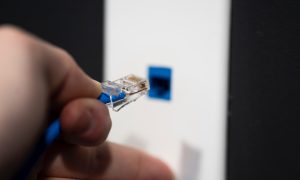The Telnet command-line utility has been a valuable tool for remote communication and testing network services for decades. Although it’s not as commonly used today due to more secure alternatives like SSH, Telnet still plays an essential role in tasks like checking open ports or testing mail server connections. However, users often encounter a frustrating issue: “Telnet is not recognized as an internal or external command.” If you’re facing this error, don’t worry—you’re not alone, and it’s relatively simple to fix.
This step-by-step guide will walk you through the methods to resolve the “Telnet not recognized” error, ensuring that you can get back to working efficiently with this time-tested tool.
What Causes the Telnet Command to Be Unrecognized?
The most common reason the Telnet command is not recognized in the Windows Command Prompt is that the Telnet client feature is not installed by default in newer versions of Windows. When you try to use a feature that hasn’t been installed, the system returns the error message indicating it doesn’t recognize the command.
[ai-img]windows command prompt, telnet error, cmd error[/ai-img]
Step-by-Step Instructions to Fix the Issue
Step 1: Confirm the Error Message
First, open the Command Prompt:
- Press Windows + R to open the Run dialog.
- Type
cmdand press Enter. - Type
telnetand hit Enter.
If you receive the message “telnet is not recognized as an internal or external command,” you’ll need to manually enable the Telnet Client feature.
Step 2: Enable Telnet via Control Panel
Here’s how to install the Telnet client through the traditional Control Panel interface:
- Open the Control Panel.
- Click on Programs, then select Programs and Features.
- In the left pane, click on Turn Windows features on or off.
- Scroll down and check the box next to Telnet Client.
- Click OK to start the installation process.
Wait for a few moments while Windows installs the feature. Once completed, you may use the Telnet command from the command line.
Step 3: Alternatively, Use PowerShell
For users who prefer command-line tools or need to script the installation on multiple machines, you can also enable Telnet using PowerShell:
- Open PowerShell as Administrator (right-click the Start button and choose Windows PowerShell (Admin)).
- Enter the following command:
Install-WindowsFeature -name Telnet-ClientThis will install the Telnet Client without navigating through the GUI.
Step 4: Verify Installation
After installation, you can verify that it’s working correctly:
- Open the Command Prompt again.
- Type
telnetand press Enter.
You should now see the Telnet interface start, confirming that the command is now recognized.
[ai-img]command prompt, telnet activated, windows screen[/ai-img]
Alternative Methods to Test Connectivity
If you’re unable to use Telnet or it’s not supported on your network for security reasons, consider these alternatives:
- PuTTY: A robust terminal emulator that supports Telnet, SSH, and more.
- PowerShell’s Test-NetConnection: Useful for testing open ports, e.g.,
Test-NetConnection -ComputerName google.com -Port 80.
Tips and Best Practices
- Only use Telnet for non-sensitive communications; it transmits data in plaintext.
- If Telnet is needed occasionally, disable it after use to reduce potential security risks.
- Always run Command Prompt or PowerShell as Administrator when modifying system features.
Conclusion
Fixing the “Telnet command not recognized” issue is straightforward once you know the proper steps. Whether you choose the Control Panel or PowerShell method, enabling the Telnet client takes just a few minutes. By following this guide, you’ll restore Telnet functionality and be equipped to use this classic networking tool whenever necessary.
While Telnet may seem outdated, its simplicity still makes it useful for administrators and developers who want quick connectivity checks—and now that it’s working again, you’re ready to put it to good use!














